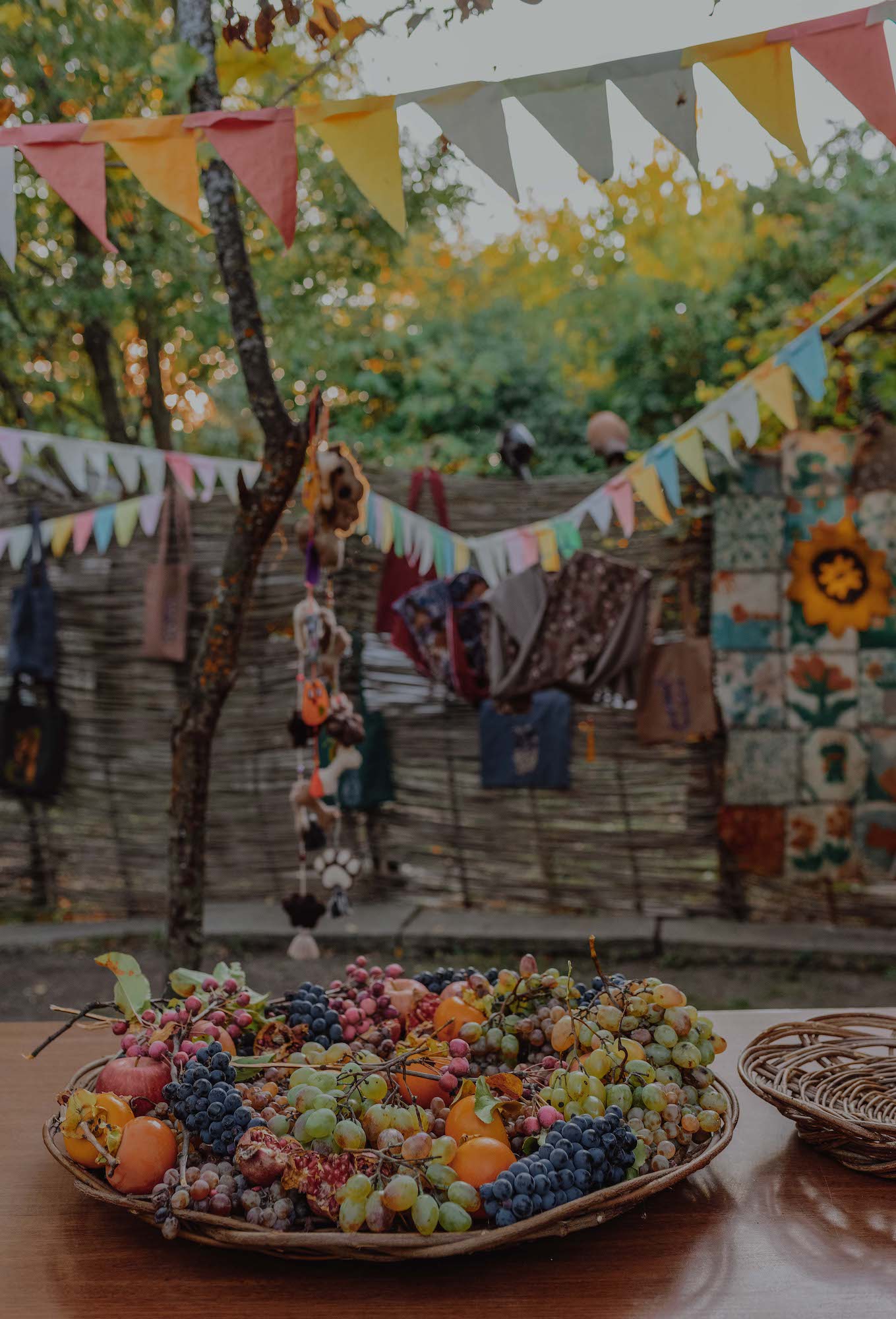
The The Cradle of Wine & The Oldest Story Ever Poured
In the folds of the Caucasus Mountains, where Europe and Asia trade whispers, Georgia has been tending vines for more than 8,000 years. The country’s winemaking story predates Rome, Greece, and even written history. Archaeologists have unearthed clay fragments still sticky with traces of ancient wine, proof that the world’s earliest vintners once worked this very soil.
Today, Georgia’s vineyards remain a living archive of that heritage. The same landscapes that once hosted Bronze Age farmers now ripple with rows of rkatsiteli and saperavi grapes, their names as lyrical as the language itself. There’s a sense of continuity here. Of rituals carried forward by families who still trust the earth more than technology, who believe that wine isn’t just made, but born..
The Art Beneath the Earth
Unlike the barrel-aged chardonnays of Burgundy or the oaken cabernets of Napa, Georgian wine finds its soul underground. The qvevri—large, egg-shaped clay vessels buried beneath the cellar floor—are at the heart of the craft. Coated in beeswax and sealed with stone, each qvevri holds fermenting grapes that rest on their skins and stems, developing earthy, amber-toned depth.
To watch a qvevri opened is to witness something sacred. A heavy lid of clay is lifted, and from the darkness rises a perfume of wild honey, damp soil, and stone fruit. This is winemaking stripped to its essence, guided not by machinery, but by patience and faith.
Many families still keep their marani, or wine cellar, as the spiritual center of the home. Crosses carved into the beams, icons of saints above the fermentation jars—these cellars are both sacred and social spaces. To enter one is to be welcomed into the lineage of Georgian hospitality.
Rtveli: The Autumn Wine Harvest in Georgia
Each October, when the air grows crisp and the grape skins begin to thicken, Georgia erupts into one of its most cherished traditions: Rtveli, the wine harvest. It’s more than an agricultural season—it’s a national celebration that marks the rhythm of rural life.
Families gather from across generations to harvest by hand, their laughter mingling with the low hum of folk songs that drift across the valleys. In Kakheti, the country’s eastern wine region, you might see a grandmother balancing a wicker basket on her hip while children chase each other through the vines. Tables are laid right in the fields, heavy with loaves of puri bread, roasted lamb, pomegranates, and platters of khachapuri, that golden, cheese-filled bread Georgia is famous for.
As dusk falls, the air carries the scent of pressed grapes and woodsmoke. Fires flicker at the vineyard’s edge, illuminating faces flushed with wine and autumn chill. There’s music, always: the deep harmonies of Georgian polyphonic singing, recognized by UNESCO as an Intangible Cultural Heritage. It’s a sound that feels ancient and immediate all at once.
The Tamada’s Table
Every Rtveli ends as all good Georgian gatherings do with a supra, the traditional feast. At its head sits the Tamada, or toastmaster, a figure both commanding and poetic. Their role is not simply to raise a glass but to guide the spirit of the table.
A Georgian toast is less a clink than a conversation. Each begins with a few words—sometimes a prayer, sometimes a story—and grows into a reflection on friendship, love, memory, or peace. The Tamada leads dozens of these over the course of the evening, weaving humor and philosophy into each sip. Guests respond in kind, their cups refilled endlessly.
To sit at a Georgian supra is to be folded into something larger than hospitality; it’s communion, in the truest sense of the word. By the time the final toast arrives—often “to life itself”—the candles have burned low and even the quietest guests have found their voices.

Georgian Winemaking History Beyond the Vine
Georgia’s wine culture is inseparable from its identity. The vine itself is a national symbol, curling across everything from church frescoes to carved wooden doors. Even the Georgian alphabet, with its looping, vine-like letters, seems to echo the rhythm of a vineyard in motion.
This devotion isn’t nostalgia, it’s defiance. Through centuries of empire and occupation, winemaking has been Georgia’s act of endurance. During the Soviet era, when mass production nearly smothered tradition, families continued to make wine quietly in their homes, preserving the old ways one jar at a time. Today, as the world rediscovers natural wines and artisanal methods, Georgia’s patience has become its greatest legacy.
The Flavor of Time in Georgian Wine
To taste Georgian wine is to taste history rendered tangible. The whites, made in qvevri with extended skin contact, pour an amber hue reminiscent of wildflower honey and carry notes of apricot, walnut, and dried herbs. The reds, like saperavi, are inky and bold, with a minerality that speaks of limestone and mountain fog. Every bottle feels rooted in place—unpolished, alive, unmistakably of the earth. These aren’t wines designed to impress; they’re meant to converse. One glass leads to another, each sip revealing a new texture, a new story, a new connection to the people who made it.

An Invitation to the Table
Travelers who visit Georgia in autumn quickly learn that Rtveli is not something to observe from a distance—it’s something to join. You might find yourself helping to harvest grapes at a family vineyard in Kakheti, or dining in a stone courtyard while a Tamada offers a toast in your honor. The night stretches on as pitchers of saperavi circulate and laughter dissolves language barriers.
To experience Georgian wine where it’s born is to understand why the country calls itself the “cradle of wine.” Here, the harvest isn’t an event—it’s a renewal, a reminder that life, like wine, is meant to be shared.
Join us on a luxury tour of Georgia to experience Georgian Wine first hand.

Georgia Tour with Chama Mama




